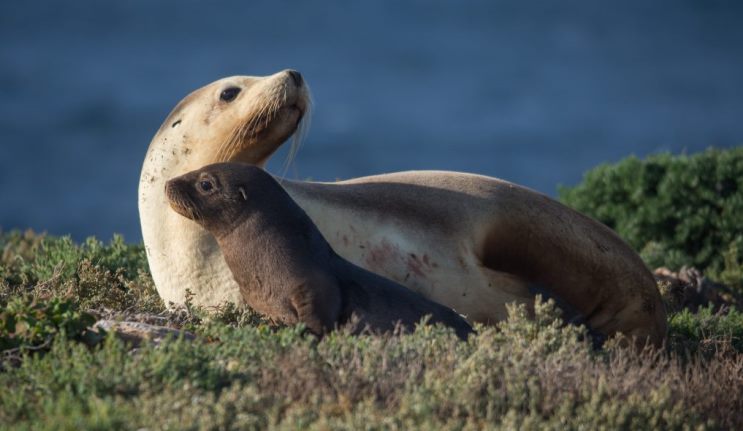
RESEARCH NEWS
It’s the mother and child reunion: sea lion mothers spot their pups in a crowd
Sea lion mothers can identify the age of their own pup based on visual cues alone, and even when pups progress from babies to teenagers the females remember what their young looks like and limit their search only to pups showing similar features, in new scientific research just published.
When returning to the colony after foraging in the ocean, mothers must find and correctly identify their pup in order to feed it. The research, published in journal Biology Letters, shows that visual cues can and potentially do speed up the reunion process.
The mother-pup reunion is a very important aspect of their biology – when foraging, females must leave the pups on land for a few days at a time while they go out at sea.
“Every time sea lion mothers return to the colony, they have to find their pup, otherwise the pup will die of starvation. We previously knew that sea lions use hearing and smell for recognition. Now, with this study we have shown that visual cues can also be used by sea lion mothers to refine their search for pups in the colony and this likely plays an important role during mother-pup reunion,” said lead author Kaja Wierucka, a researcher from the Department of Biological Sciences at Macquarie University and Institut des Neurosciences Paris Saclay at Université Paris-Sud in France.
Sea lion vision is not as good as that of terrestrial mammals, so it was unknown whether vision would be helpful in finding pups by females within the colony and this study has shown that it could be.
Australian sea lions have a long pupping season, lasting up to eight months. Consequently, in a given colony at the same time, there will be multiple pups of different ages, ranging from ‘babies’ to ‘teenage’ pups that differ in their size and colour. Females can use these characteristics to limit their search only to pups that look like their own.
“It is important that mothers are able to find and identify their own offspring. It ensures that mothers will provide costly resources, such as milk, only to their pup and therefore increase their chances of survival,” said co-author Dr Ben Pitcher.
“It is more efficient and clearly more beneficial for a female sea lion to be able to quickly identify and feed their offspring, but we don’t really know the details of how they recognise each other, how different senses interact and which of them, including smell and hearing, are most important. This research sheds more light onto this process and provides us with further guidance for future research,” concluded Wierucka.
Wierucka K., Pitcher BJ., Harcourt R. and Charrier I. The role of visual cues in mother–pup reunions in a colonially breeding mammal. Biology Letters. November 2017. doi.org/10.1098/rsbl.2017.0444